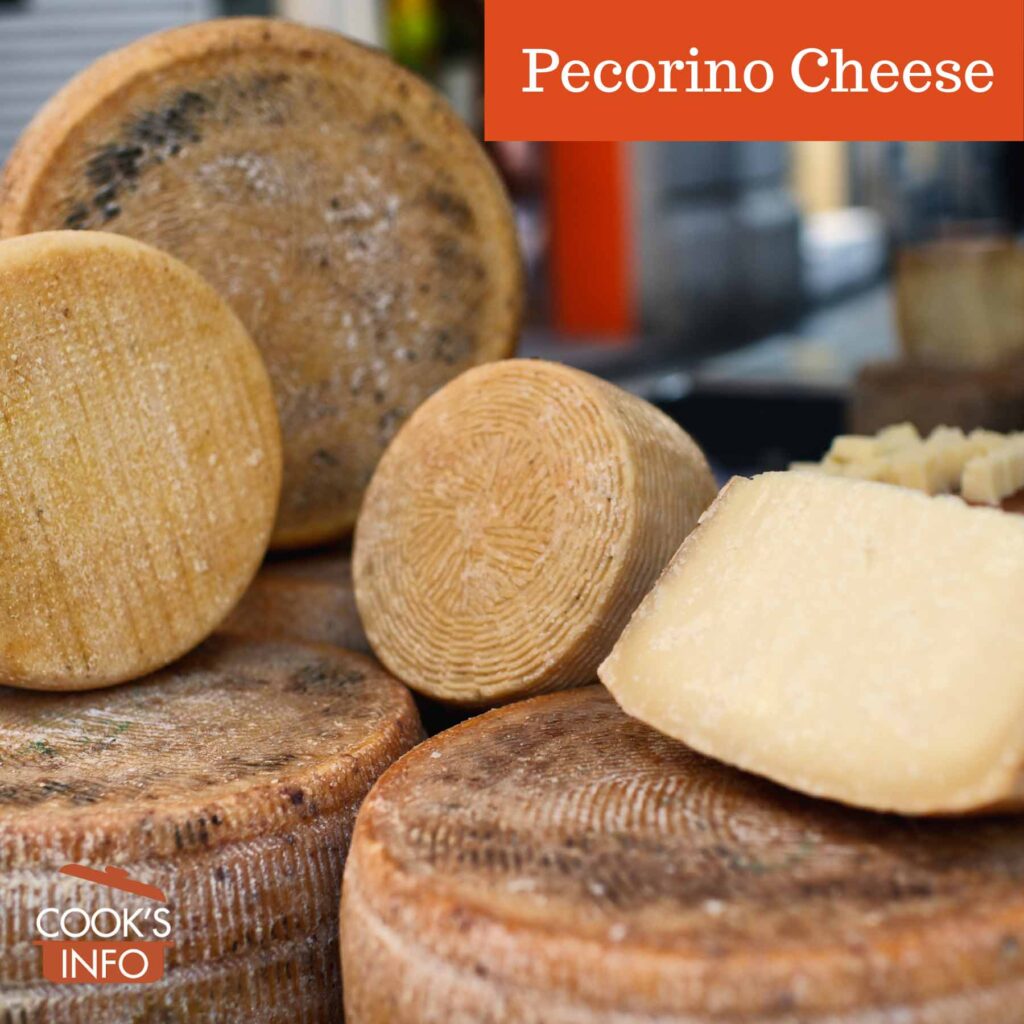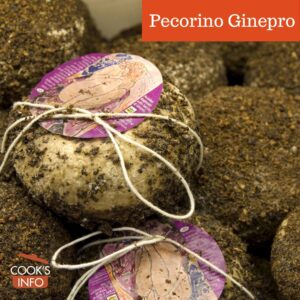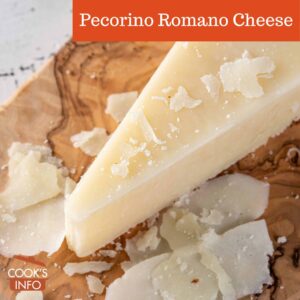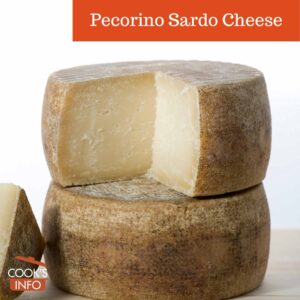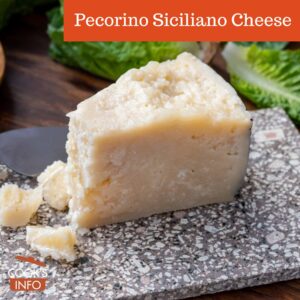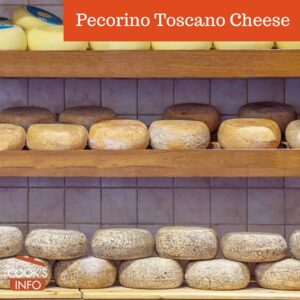Pecorino is the name given to all Italian cheeses made from sheep’s milk.
The rinds have a herringbone pattern which used to be caused by the cheese being moulded in presses made of strands of grass. Now, even though grass presses are no longer used, because the marks are expected, they are deliberately impressed by plastic moulds (just as they are for Spanish Manchego cheese.)
Pecorino cheeses distinguished by aging
Pecorino cheeses can be sold either young or old. The old ones are sometimes referred to as “ripened” (“stagionato“). They are generally aged for at least four months, during which time they develop a strong, defined flavour, a brittle, hard texture and a thick yellowish or brownish rind.
The younger versions may be matured for only 20 days. They are softer, and have a milder taste. They are sometimes referred to as “sweet.” These younger versions melt and slice well, but don’t grate well.
Both aged and young versions will have a salty tang to them.
Cooking Tips
Aged pecorinos can be easily shaved or finely grated.
Language Notes
“Pecora” in Italian means “sheep”. “Pecorino” is an adjective derived from that word, meaning “pertaining to sheep”.
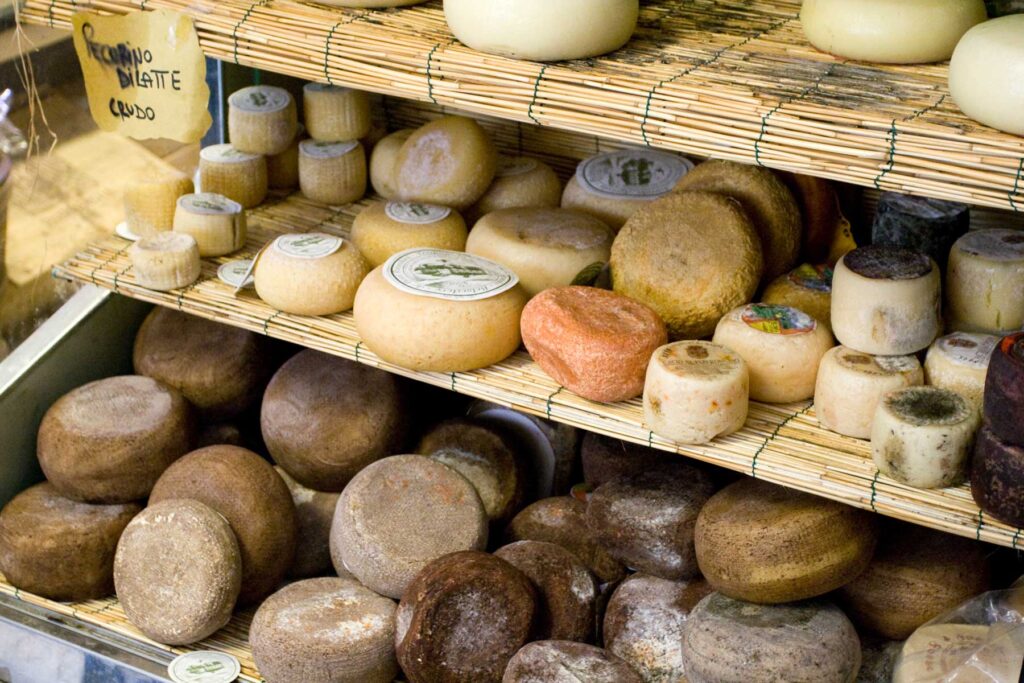
Assorted raw milk pecorino cheeses. Marco Varisco / flickr / 2008 / CC BY-SA 2.0
Types of pecorino
The four main types of pecorino cheese are grouped geographically by where they are traditionally made:
- Pecorino Romano is the name given to cheeses from the Rome area. They are well-aged and sharp;
- Pecorino Toscano is from Tuscany, milder and creamy when young, stronger and drier when aged;
- Pecorino Sardo is from Sardinia;
- Pecorino Siciliano is from Sicily.


